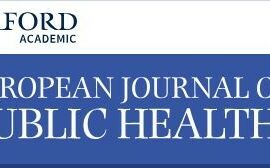
Lucas Wiessing, Eleni Kalamara, Jack Stone, Peyman Altan, Luk Van Baelen, Anastasios Fotiou, D’Jamila Garcia, Joao Goulao, Bruno Guarita, Vivian Hope, Marie Jauffret-Roustide, Lina Jurgelaitienė, Martin Kåberg, Adeeba Kamarulzaman, Liis Lemsalu, Anda Kivite-Urtane, Branko Kolarić, Linda Montanari, Magdalena Rosińska, Lavinius Sava, Ilonka Horváth, Thomas Seyler, Vana Sypsa, Anna Tarján, Ioanna Yiasemi, Ruth Zimmermann, Marica Ferri, Kate Dolan, Anneli Uusküla, Peter Vickerman
Eurosurveillance Volume 26, Issue 49, 09/Dec/2021
Abstract
Background
People who inject drugs (PWID) are frequently incarcerated, which is associated with multiple negative health outcomes.Aim
We aimed to estimate the associations between a history of incarceration and prevalence of HIV and HCV infection among PWID in Europe.
Methods
Aggregate data from PWID recruited in drug services (excluding prison services) or elsewhere in the community were reported by 17 of 30 countries (16 per virus) collaborating in a European drug monitoring system (2006–2020; n = 52,368 HIV+/−; n = 47,268 HCV+/−). Country-specific odds ratios (OR) and prevalence ratios (PR) were calculated from country totals of HIV and HCV antibody status and self-reported life-time incarceration history, and pooled using meta-analyses. Country-specific and overall population attributable risk (PAR) were estimated using pooled PR.
Results
Univariable HIV OR ranged between 0.73 and 6.37 (median: 2.1; pooled OR: 1.92; 95% CI: 1.52–2.42). Pooled PR was 1.66 (95% CI 1.38–1.98), giving a PAR of 25.8% (95% CI 16.7–34.0). Univariable anti-HCV OR ranged between 1.06 and 5.04 (median: 2.70; pooled OR: 2.51; 95% CI: 2.17–2.91). Pooled PR was 1.42 (95% CI: 1.28–1.58) and PAR 16.7% (95% CI: 11.8–21.7). Subgroup analyses showed differences in the OR for HCV by geographical region, with lower estimates in southern Europe.
Conclusion
In univariable analysis, a history of incarceration was associated with positive HIV and HCV serostatus among PWID in Europe. Applying the precautionary principle would suggest finding alternatives to incarceration of PWID and strengthening health and social services in prison and after release (‘throughcare’).
Read the full article in Eurosurveillance.


